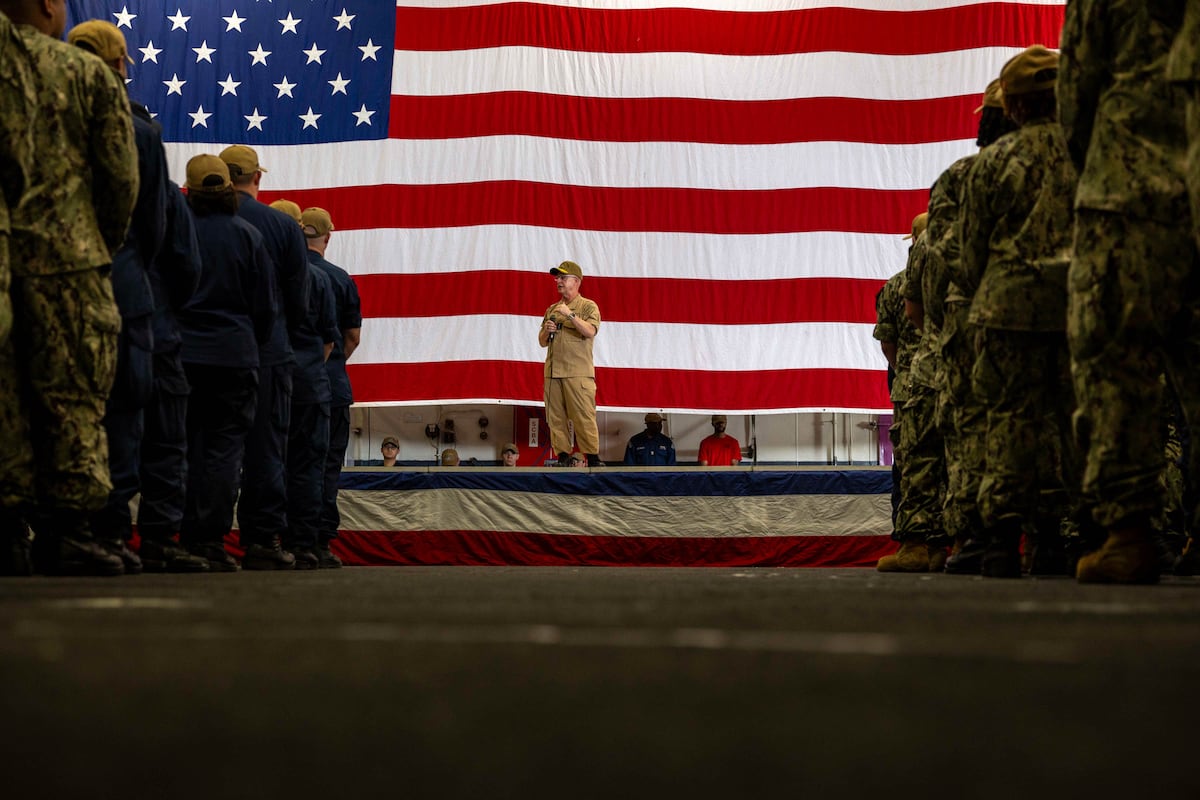The U.S. Navy is set to undergo significant changes in personnel training and development as outlined by its new chief, Adm. Daryl Caudle. In a recent administrative message, Caudle emphasized the need for enhanced technical skills among service members to maintain a competitive edge in an increasingly complex global threat landscape. Taking office as the 34th chief of naval operations on August 25, 2023, he articulated his vision for a modernized naval force capable of adapting to rapid technological advancements.
Caudle’s message highlights the importance of a robust training framework, stating, “To keep pace with the proliferation of technology and the global evolution of threats, we are enhancing the quality of our curricula.” He stressed the need for a culture of continuous learning, aiming to develop “world-class, modernized and battle-ready Sailors.” This approach is part of a broader strategic plan that he shared previously, focusing on the foundry, fleet, and the fight.
New Training Initiatives and Infrastructure Improvements
Under the revamped training framework, the Navy will replace its Ready Relevant Learning program with the newly named “Career Training Continuum.” This initiative aims to provide personalized training and lifelong learning opportunities for sailors at all stages of their careers. Caudle is committed to identifying and addressing gaps in sailor training, stating that advancements in technology will play a crucial role in these efforts.
The chief also outlined plans to expand the Live-Virtual-Constructive (LVC) training methods, which integrate live exercises with virtual simulations. This expansion will cover a broader range of training scenarios, enhancing unit-level training and wargaming capabilities. “I have also directed that our LVC efforts be expanded past the current use cases… to include a more generalized view of LVC,” Caudle noted.
In addition to training reforms, Caudle is focused on modernizing the Navy’s infrastructure. He emphasized the need for improvements in shipyards, airfields, and barracks to meet operational demands effectively. Enhanced workforce development and project management are crucial to achieving these goals. He specifically mentioned plans to improve training conditions and retention rates within public shipyards, aiming for increased efficiency in project timelines.
Addressing Maintenance and Skills Gaps
Adm. Caudle expressed concern regarding the Navy’s current maintenance structure, which he believes limits sailors’ opportunities to master essential repair skills. He intends to establish Shore Intermediate Maintenance Activities in Norfolk, Virginia, and San Diego to provide hands-on training in advanced ship repair techniques. These facilities will expose sailors to modern technologies, including artificial intelligence, advanced manufacturing methods such as 3-D printing, and robotic systems.
“These facilities will provide our Sailors with hands-on training in advanced ship repair and expose them to modern capabilities such as AI/ML, advanced manufacturing, workflow monitoring technologies, and robotic systems,” Caudle stated.
As the Navy embarks on these transformative initiatives, it aims not only to enhance the capabilities of its personnel but also to ensure its readiness in the face of evolving global threats. The focus on continuous improvement in training and infrastructure reflects a commitment to maintaining a strong and capable naval force for the future.





































































